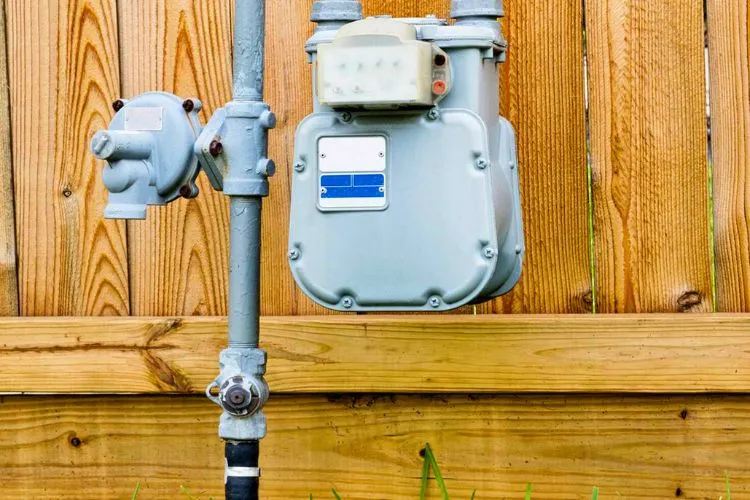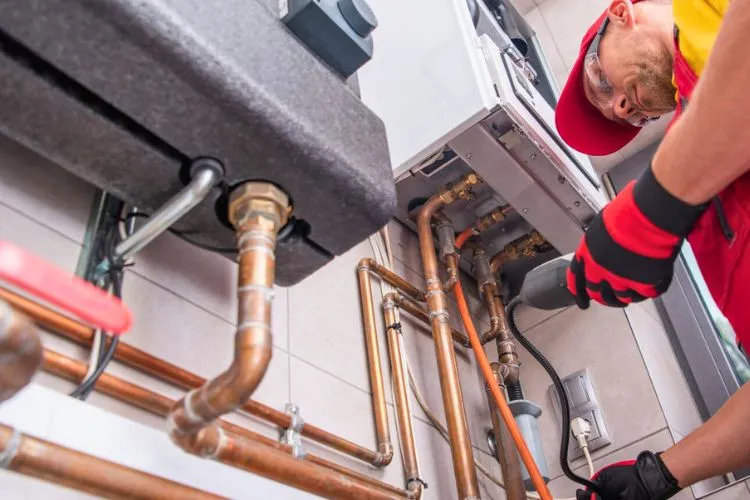Knowing how to turn off your gas meter is an essential skill that every homeowner and tenant should possess for safety reasons.
Whether you’re dealing with a gas leak, conducting major home renovations, or shutting down your property for an extended period, knowing how to safely turn off your gas supply can prevent accidents and ensure the well-being of everyone in the vicinity.
This article aims to provide a straightforward, step-by-step guide on how to turn off your gas meter.

We will cover the necessary tools, safety precautions, and the proper procedures to ensure that you can perform this task efficiently and safely.
How to Turn off Your Gas Meter? A Stepwise Guide
Turning off your gas meter is a crucial safety measure that can prevent accidents and ensure the safety of your home and family.
Here is a detailed guide on how to safely turn off your gas meter:
Locate Your Gas Meter

- Your gas meter can usually be found on the side or back of your house, in a basement, or in a utility closet. It’s typically a rectangular device with pipes running to and from it.
- Ensure you have access to it and that it is not obstructed by any objects or debris.
Safety Precautions
- Before attempting to turn off the gas meter, ensure there is no open flame or any source of ignition nearby.
- Do not use any electrical switches, appliances, or lights until the gas supply is safely turned off and the situation is resolved.
- It’s advisable to have a flashlight handy if you need additional light, rather than using a match or lighter.
Identify the Gas Shutoff Valve
- The gas shutoff valve is typically located on the pipe that comes out of the ground and goes into the meter.
- Look for a valve that is perpendicular (forming a T shape) to the pipe. This is the shut-off valve.
Turn Off the Valve
- Use an adjustable wrench or gas meter shut-off tool to turn the valve. You will need to turn the valve a quarter turn so that it is parallel (forming an I shape) with the pipe.
- When the valve is in line with the pipe, the gas flow is off. If it is perpendicular (crosswise) to the pipe, the gas is on.
- If the valve is stiff or you are unable to turn it, do not force it. Call your gas company for assistance.
Check Your Appliances
- After turning off the gas, check all your gas appliances to ensure they are off and fully extinguished. This includes stoves, ovens, furnaces, and water heaters.
- Do not attempt to relight any appliances yourself after turning off the gas.
Leave the House if Necessary
- If you smelled gas before turning off the meter or if you suspect a gas leak, leave the house immediately after shutting off the gas.
- Do not return until a professional has checked your home and declared it safe.
Contact Professionals

- Once the gas is turned off, contact your gas company or a licensed gas technician to inspect your home and address any issues.
- Do not turn the gas back on yourself. A professional should do this to ensure it is done safely and correctly.
Preventive Measures
- Familiarize yourself with the smell of gas, which is often described as a rotten egg smell due to an additive that gas companies use.
- Install a gas detector in your home for early detection of gas leaks.
Turning off your gas meter is a straightforward process, but it requires caution and respect for the dangers associated with natural gas.
By following these steps, you can ensure the safety of your home and loved ones. Remember, when in doubt, always call a professional to handle gas-related issues.
Emergency Preparedness for Gas Leaks
Gas leaks can be dangerous and require immediate attention. Being prepared and knowing what to do can prevent accidents and ensure safety. Below are detailed steps and procedures to follow in the event of a gas leak.
Steps to Take in the Event of a Gas Leak
- Identify the Leak: Common signs include a distinctive sulfur-like odor (similar to rotten eggs), a hissing or whistling sound near a gas line or appliance, and dead or dying vegetation in otherwise moist areas around your pipeline.
- Do Not Ignite Anything: Avoid turning on lights, using matches, lighters, or operating electrical devices, including telephones, as they can create sparks that might ignite the gas.
- Evacuate Immediately: If the gas odor is strong or if you hear a hissing sound, evacuate the area immediately. Do not attempt to locate the source of the leak. Ensure that everyone leaves the area and moves to a safe location away from the building.
- Leave Doors Open: As you leave, open doors to help ventilate the area and disperse the gas, but do not take time to open windows, as this could delay evacuation.
- Avoid Using Vehicles: Do not start cars or motorbikes near the area of the gas leak, as this could ignite the gas.
Communicating and Reporting a Gas Emergency
- Call From a Safe Distance: Once you are safely away from the area of the leak, call your gas utility company’s emergency number or dial emergency services. Do not use your phone near the area of the leak.
- Provide Detailed Information: When you call, provide as much information as possible about the situation, including the location of the leak, any signs of the leak you have noticed, and if anyone is feeling ill or has been injured.
- Follow Instructions: The gas company or emergency responder will provide instructions on what to do next. Follow these instructions carefully.
The Role of Emergency Services
- Immediate Response: Emergency services will respond quickly to reports of gas leaks. They may evacuate the area further, secure the site, and work to prevent any ignition sources from igniting the gas.
- Detection and Repair: Trained personnel will use specialized equipment to detect the exact location of the leak. Once the leak is located, they will make the necessary repairs to stop the gas flow.
- Medical Assistance: If anyone has been exposed to the gas and is feeling ill, emergency medical services will provide necessary care.
- Safety Checks: Before allowing anyone to return to the area, emergency services will ensure that the area is safe and the gas concentration has dissipated to safe levels.
- Investigation: Authorities will investigate the cause of the gas leak to prevent future incidents. They may also provide safety recommendations to the affected individuals and the community.
Emergency preparedness for gas leaks is crucial for ensuring the safety and well-being of individuals and communities. Understanding the steps to take in the event of a gas leak, how to communicate and report a gas emergency, and knowing the role of emergency services can help mitigate the risks associated with gas leaks.
Regularly review and practice evacuation procedures and ensure that all household members or employees are aware of how to act in case of a gas emergency.
Conclusion:
Learning how to turn off your gas meter safely is a vital preventative step in ensuring household safety, particularly during emergencies like leaks, natural disasters, or extensive maintenance work. Familiarize yourself with your specific meter type and the correct shutdown procedure.
Remember, never attempt to turn it back on yourself. Call a professional to restore your gas supply to guarantee safety and reliability. Consider this knowledge as a crucial part of being a responsible homeowner or tenant.


